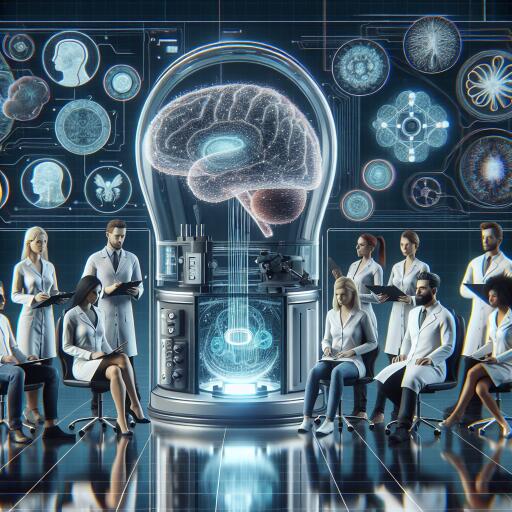Revolutionary Breakthrough: Mind-Reading Machine Translates Thoughts to Text
In an astonishing stride forward in the domain of brain-computer interface (BCI) technology, scientists have unlocked a new level of interaction between the human mind and machines. The concept of reading someone’s mind has transitioned from the realms of fantasy and fiction into the tangible world, thanks to groundbreaking research by the team at the California Institute of Technology (Caltech).
The researchers at Caltech have developed a cutting-edge machine with the capability to decipher human thoughts and convert them into text in real-time. This innovation not only challenges our traditional views on the limits of technology but also opens up a myriad of possibilities for future applications in various fields.
One of the most remarkable aspects of this technology is its accuracy. The machine boasts an impressive 79 per cent success rate in translating thoughts into text. Such a high level of precision is a testament to the years of meticulous research and technical prowess behind this project. It suggests a future where barriers between thought and communication can be significantly reduced for those who are unable to speak due to various reasons.
This significant leap in BCI technology heralds a new era in human-machine interactions. The potential applications of this technology are wide-ranging. It could revolutionize the way we approach communication, aid in the rehabilitation of individuals with speech impairments, and even contribute to the advancement of artificial intelligence by improving machines’ understanding of human thoughts and emotions.
The mind-reading machine represents not just a technological breakthrough but also poses questions about the ethics and privacy implications of such capabilities. As we stand on the brink of this new frontier, it is essential to navigate these advancements with care and consideration for the potential impacts on individual privacy and the fabric of society as a whole.
The realization of devices that can interpret our innermost thoughts and translate them into text is a profound development. It underscores the relentless pursuit of knowledge and the human desire to break down barriers between the natural and the artificial. As we look to the future, the integration of such technology into our daily lives promises to redefine our interaction with the digital world and each other.
As this technology advances, it will be fascinating to see how it evolves and the new dimensions it will bring to human-computer interaction. The team at Caltech is already exploring further refinements to enhance the accuracy and efficiency of their machine, suggesting that what we see today is only the beginning of a new chapter in the symbiotic relationship between humans and machines.









